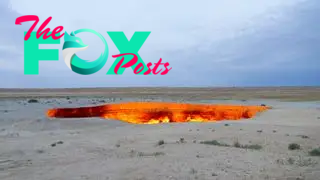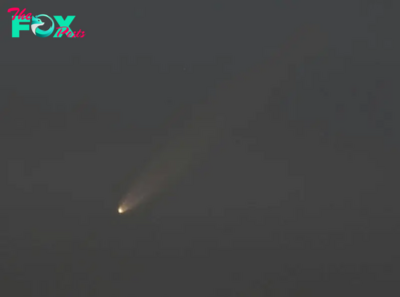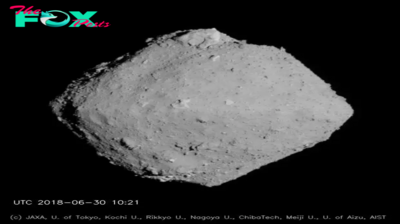Science
Gates of Hell: Turkmenistan's methane-fueled fire pit that has been burning since 1971
Name: The Gates of Hell
Location: Karakum desert, Turkmenistan
Coordinates: 40.252501987265276, 58.43959946915778
Why it's incredible: The entire gas crater has been on fire for more than 50 years.
The "Gates of Hell," also known as the Darvaza gas crater after a nearby village, is a methane- and fire-filled crater in Turkmenistan's desert.
There are several different accounts of when and how the Gates of Hell formed, but the most widely circulated story is that the crater opened in 1971 after a Soviet gas drilling rig accidentally hit a natural gas reservoir. (Turkmenistan was a constituent republic of the Soviet Union from 1925 to 1991.)
Related: Hot Tub of Despair: The deadly ocean pool that traps and pickles creatures that fall in
The puncture caused the ground around the rig to collapse, taking the drilling infrastructure down with it and creating a giant leak from the reservoir. As soon as the ground opened, methane gas and other noxious fumes began wafting from the crater, which is roughly 230 feet (70 meters) in diameter and 100 feet (30 m) deep. This prompted geologists to come up with a bold plan to avert a potential environmental disaster — people in neighboring villages becoming poisoned by the raw gases, for example.

Shortly after the crater opened, Soviet scientists set its walls alight, thinking the fire would burn off the methane within a few weeks before dying down. But instead, the fire kept burning.
Fifty-three years later — and despite Turkmenistan's president announcing plans to close the Gates of Hell — the Darvaza gas crater is still a raging blaze. The crater sits atop the Amu-Darya Basin, a highly productive oil and natural gas province that stretches across Turkmenistan and Uzbekistan. Huge amounts of natural gas — predominantly methane — seep through Earth's crust across the basin, so "we shouldn't be surprised [the Darvaza crater] exists," Mark Ireland, a senior lecturer in energy geoScience at Newcastle University in the U.K., told National Geographic.
The crater is likely connected to stores of flaMMAble methane gas that provide seemingly unlimited fuel for the fire.
-

 Science21h ago
Science21h agoWhy Risky Wildfire Zones Have Been Increasing Around the World
-

 Science1d ago
Science1d agoIt’s Time to Redefine What a Megafire Is in the Climate Change Era
-

 Science2d ago
Science2d ago4 Astronauts Return to Earth After Being Delayed by Boeing’s Capsule Trouble and Hurricane Milton
-

 Science3d ago
Science3d agoThe Elegance and Awkwardness of NASA’s New Moon Suit, Designed by Axiom and Prada
-

 Science1w ago
Science1w agoSpaceX Launches Its Mega Starship Rocket. This Time, Mechanical Arms Catch It at Landing
-

 Science3w ago
Science3w agoYou Won’t Want to Miss October’s Rare Comet Sighting. Here’s How and When You Can See It
-

 Science1m ago
Science1m agoA New Spacecraft Could Help Determine if There’s Life on a Moon of Jupiter
-

 Science1m ago
Science1m agoWe Can Thank Deep-Space Asteroids for Helping Start Life on Earth



























